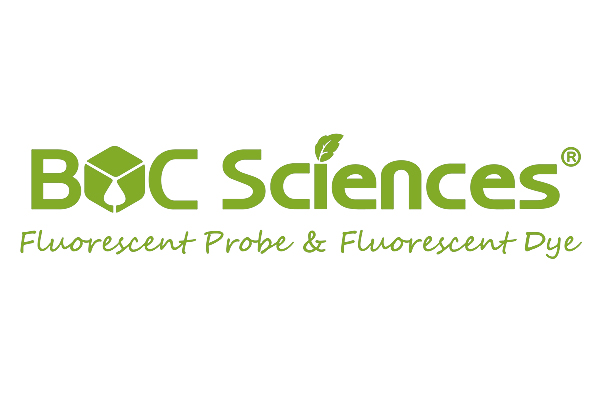
SNAP(D) | CAS 79032-48-7
| Catalog Number | A03-0005 |
| Category | NO & ROS Probes |
| Molecular Formula | C7H12N2O4S |
| Molecular Weight | 220.24 |
* Please be kindly noted products are not for therapeutic use. We do not sell to patients.
Product Introduction
SNAP(D) is a derivative of D-Penicillamine, which is a penicillin metabolite used in the treatment of Wilson's disease, Cystinuria, Scleroderma and arsenic poisoning.
Chemical Information
Product Specification
Application
| Related CAS | 67776-06-1 (DL-isomer) 273921-90-7 (L-isomer) |
| Synonyms | SNAP;Ac-D-Pen(NO)-OH; (S)-Nitroso-N-acetylpenicillamine; N-Acetyl-3-(nitrosothio)-D-valine; N-Acetyl-S-nitroso-D-penicillamine; S-Nonap; S-Nitroso-N-acetyl-D-β,β-dimethylcysteine; (S)-2-acetamido-3-methyl-3-(nitrosothio)butanoic acid |
| Purity | ≥95% |
| IUPAC Name | (2S)-2-acetamido-3-methyl-3-nitrososulfanylbutanoic acid |
| Canonical SMILES | CC(=O)NC(C(=O)O)C(C)(C)SN=O |
| InChI | InChI=1S/C7H12N2O4S/c1-4(10)8-5(6(11)12)7(2,3)14-9-13/h5H,1-3H3,(H,8,10)(H,11,12)/t5-/m0/s1 |
| InChIKey | ZIIQCSMRQKCOCT-YFKPBYRVSA-N |
| Solubility | Soluble in Water |
| Density | 1.4±0.1 g/cm3 |
| Appearance | Green Crystalline Solid |
| Storage | Store at -20°C |
Nitric Oxide Donor Studies: SNAP(D) is extensively used as a nitric oxide (NO) donor in biological research due to its ability to release controlled amounts of NO under physiological conditions. This application is crucial for studying the role of NO in various cellular processes, such as vasodilation, neurotransmission, and immune response. Researchers use SNAP(D) to investigate the effects of NO on vascular smooth muscle cells, which can help in understanding its role in regulating blood pressure and cardiovascular health. By providing a reliable source of NO, SNAP(D) enables the exploration of NO-related signaling pathways and the development of potential therapeutic strategies targeting NO modulation.
Reactive Oxygen Species (ROS) Modulation: In addition to its role as a NO donor, SNAP(D) can influence the generation of reactive oxygen species (ROS), making it a valuable tool for studying oxidative stress in cells. This application is particularly important in research focused on the impact of ROS on cellular health and disease development, including cancer, neurodegenerative disorders, and cardiovascular diseases. By modulating ROS levels, researchers can use SNAP(D) to explore the intricate balance between ROS production and antioxidant defense mechanisms, helping to identify potential targets for interventions aimed at reducing oxidative damage.
Investigating Cell Signaling Pathways: SNAP(D) is employed to study various cell signaling pathways, particularly those involving NO and ROS as signaling molecules. These pathways are critical in regulating numerous biological functions, such as inflammation, apoptosis, and cell proliferation. Researchers use SNAP(D) to delineate the specific roles of NO and ROS in these pathways, providing insights into how cells respond to different stimuli and stress conditions. This application is essential for understanding the molecular mechanisms underlying various pathologies and for identifying new therapeutic targets in diseases where NO and ROS signaling is dysregulated.
Drug Development and Testing: SNAP(D) is also used in drug development and testing as a model compound to evaluate the efficacy and safety of NO-based therapies. Its ability to release NO in a controlled manner makes it ideal for screening potential drugs that target NO pathways. Researchers utilize SNAP(D) in preclinical studies to assess how candidate drugs interact with NO signaling and their effects on cellular functions. This application is valuable for developing novel therapeutics aimed at treating conditions such as hypertension, ischemia-reperfusion injury, and inflammatory diseases. By providing a consistent and reproducible source of NO, SNAP(D) facilitates the discovery and optimization of NO-related drug candidates.
Recommended Services
Recommended Articles

- Hoechst Dyes: Definition, Structure, Mechanism and Applications
- Mastering the Spectrum: A Comprehensive Guide to Cy3 and Cy5 Dyes
- Fluorescent Probes: Definition, Structure, Types and Application
- Fluorescent Dyes: Definition, Mechanism, Types and Application
- Coumarin Dyes: Definition, Structure, Benefits, Synthesis and Uses
- Unlocking the Power of Fluorescence Imaging: A Comprehensive Guide
- Cell Imaging: Definitions, Systems, Protocols, Dyes, and Applications
- Lipid Staining: Definition, Principles, Methods, Dyes, and Uses
- Flow Cytometry: Definition, Principles, Protocols, Dyes, and Uses
- Nucleic Acid Staining: Definition, Principles, Dyes, Procedures, and Uses
Recommended Products
Online Inquiry


![1,3-Propanediamine,N1-[4-[1-(3-aminopropyl)-2-hydroxy-2-nitrosohydrazinyl]butyl]-](https://resource.bocsci.com/structure/136587-13-8.gif)










